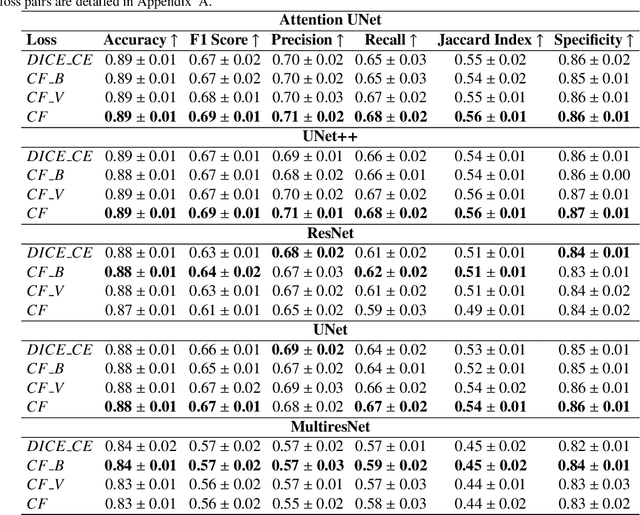Hugues Berry
AISTROSIGHT
Vascular Segmentation of Functional Ultrasound Images using Deep Learning
Oct 28, 2024



Abstract:Segmentation of medical images is a fundamental task with numerous applications. While MRI, CT, and PET modalities have significantly benefited from deep learning segmentation techniques, more recent modalities, like functional ultrasound (fUS), have seen limited progress. fUS is a non invasive imaging method that measures changes in cerebral blood volume (CBV) with high spatio-temporal resolution. However, distinguishing arterioles from venules in fUS is challenging due to opposing blood flow directions within the same pixel. Ultrasound localization microscopy (ULM) can enhance resolution by tracking microbubble contrast agents but is invasive, and lacks dynamic CBV quantification. In this paper, we introduce the first deep learning-based segmentation tool for fUS images, capable of differentiating signals from different vascular compartments, based on ULM automatic annotation and enabling dynamic CBV quantification. We evaluate various UNet architectures on fUS images of rat brains, achieving competitive segmentation performance, with 90% accuracy, a 71% F1 score, and an IoU of 0.59, using only 100 temporal frames from a fUS stack. These results are comparable to those from tubular structure segmentation in other imaging modalities. Additionally, models trained on resting-state data generalize well to images captured during visual stimulation, highlighting robustness. This work offers a non-invasive, cost-effective alternative to ULM, enhancing fUS data interpretation and improving understanding of vessel function. Our pipeline shows high linear correlation coefficients between signals from predicted and actual compartments in both cortical and deeperregions, showcasing its ability to accurately capture blood flow dynamics.
Optimising the topology of complex neural networks
Oct 01, 2007


Abstract:In this paper, we study instances of complex neural networks, i.e. neural netwo rks with complex topologies. We use Self-Organizing Map neural networks whose n eighbourhood relationships are defined by a complex network, to classify handwr itten digits. We show that topology has a small impact on performance and robus tness to neuron failures, at least at long learning times. Performance may howe ver be increased (by almost 10%) by artificial evolution of the network topo logy. In our experimental conditions, the evolved networks are more random than their parents, but display a more heterogeneous degree distribution.
Characterizing Self-Developing Biological Neural Networks: A First Step Towards their Application To Computing Systems
May 10, 2005



Abstract:Carbon nanotubes are often seen as the only alternative technology to silicon transistors. While they are the most likely short-term one, other longer-term alternatives should be studied as well. While contemplating biological neurons as an alternative component may seem preposterous at first sight, significant recent progress in CMOS-neuron interface suggests this direction may not be unrealistic; moreover, biological neurons are known to self-assemble into very large networks capable of complex information processing tasks, something that has yet to be achieved with other emerging technologies. The first step to designing computing systems on top of biological neurons is to build an abstract model of self-assembled biological neural networks, much like computer architects manipulate abstract models of transistors and circuits. In this article, we propose a first model of the structure of biological neural networks. We provide empirical evidence that this model matches the biological neural networks found in living organisms, and exhibits the small-world graph structure properties commonly found in many large and self-organized systems, including biological neural networks. More importantly, we extract the simple local rules and characteristics governing the growth of such networks, enabling the development of potentially large but realistic biological neural networks, as would be needed for complex information processing/computing tasks. Based on this model, future work will be targeted to understanding the evolution and learning properties of such networks, and how they can be used to build computing systems.
 Add to Chrome
Add to Chrome Add to Firefox
Add to Firefox Add to Edge
Add to Edge